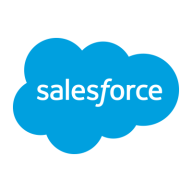

Tableau Enterprise and Domo compete in the business intelligence and data visualization category. Tableau is known for its robust visualization capabilities, whereas Domo is preferred for its ease of use and collaboration features.
Features: Tableau Enterprise offers advanced data visualization with flexible data source integration and drill-down capabilities. It supports extensive data blending and interactive visualizations. Users appreciate its ability to handle complex datasets and extract meaningful insights. Domo provides a user-friendly interface with pre-configured reports and robust collaboration tools. Its drag-and-drop functionality and extensive data connectors streamline data integration, though its visualization options are more limited compared to Tableau.
Room for Improvement: Tableau Enterprise users often face challenges with pricing, performance on large datasets, and its steep learning curve for non-technical users. There's a need for improved metadata capabilities and ETL functionality. Domo users seek better data governance, expanded visualization options, and improved performance with large data volumes. There's also a demand for more dashboard customization and a more straightforward data integration workflow.
Ease of Deployment and Customer Service: Tableau Enterprise provides flexible deployment options including on-premises, hybrid, and cloud solutions. It has a supportive community and comprehensive documentation, though initial setup can be daunting for some. Customer service receives high ratings, but the standard support tier could be improved. Domo is known for its quick deployment and simple management, excelling in cloud scalability and integration. Customer service is proactive, but some organizations consider pricing a barrier.
Pricing and ROI: Tableau Enterprise is perceived as expensive, especially for smaller businesses, but its extensive features and insightful data analysis justify the cost for many. Pricing can become particularly steep as user numbers expand. Domo, while not cheap, offers flexible licensing with lower infrastructure costs, attractive for all-in-one BI tool enterprises prioritizing SaaS solutions. Despite its higher cost, Tableau is often preferred for sophisticated analysis and visualization.
If you're actually using Domo at a very limited case and you're being charged $20,000, we've seen ROI there, but once it goes really high, you really need to check your metrics and check your profit.
This saves a significant amount of time, particularly for reports that would have needed around fifty people.
The ROI of using Tableau extends to its seamless integration across various platforms, as it's from Salesforce and thus not limited to any specific cloud provider.
Tableau is saving me time, money, and resources, which I would rate as ten.
No matter how complex the problem is, it can be taken care of by the support team.
They were quite professional and in around three to five working days, they had identified where they suspected there was an issue and I was able to fix it.
It's very easy to get technical support from Domo.
They provide quick email and phone responses and have Thai-speaking personnel.
There should be consistent standards for all users.
The technical support for Tableau is quite good.
The fact that you're able to easily identify the pipelines or flows that have errors, and it notifies you when you're building a pipeline where you can run previews and tell where to fix issues, is helpful.
When fetching files larger than 100 MB from SFTP or any other portal, Domo becomes slow due to the heavy file size.
Everything comes under the same umbrella and it's pretty user-friendly.
Tableau is easy to use across various dimensions, whether on-premises or on the cloud.
The solution is fully scalable and performs well even with large datasets, provided there is proper supporting hardware.
Tableau is easy to scale.
In recent years, I haven't had such cases. It's quite stable and I don't have any reservations on its stability.
In terms of overall stability of the platform, it's very stable.
During that time, we faced issues from the project side as Domo was not visible in our portal.
The application hangs after continuous use due to the buildup of cache.
I rate the stability a five or six because Tableau updates very often with new versions or patches.
End users require a license to run their own reports and dashboards, which are fairly expensive.
Some technical aspects such as Beast Mode calculation could be improved in Domo, as it would provide more clarity and help in giving insights to clients or customer business team requirements.
One of the areas where we've had frustrations with Domo is the aesthetics. The aesthetics are quite limited compared to other BI tools such as Tableau and Power BI.
We cannot send the entire Excel file reports via email within Tableau.
The product owner should enhance its benefits or clarify its role.
It sometimes requires extensive investigation to determine why the data does not appear correctly.
Domo's pricing is high compared to other BI tools, and it is costly.
For long-time users, it can become expensive, but the trade-off is access to the entire platform instead of licensing different components separately.
They quoted approximately one dollar per KB.
Power BI as a much cheaper alternative.
A license for 150 users costs around $17,000 USD per year.
Looker is known to be quite expensive.
App Studio is valuable because it allows all the customization we needed; we can decode it, with the view and grid which are all I need, drill-downs, and everything can be done the way I need it.
None of the other tools provide the kind of support that enables chatting and working on the same item simultaneously.
I have been using it for four years and have been able to extract the information I need from it.
A significant feature for me is the real-time connection to data sources because it effectively manages large data sets.
Tableau serves as a stable dashboarding tool for higher management, aiding in quick decision-making.
Building hyper extracts and visualization capabilities make Tableau a robust tool for data analysis.
| Product | Market Share (%) |
|---|---|
| Tableau Enterprise | 9.2% |
| Domo | 4.2% |
| Other | 86.6% |




| Company Size | Count |
|---|---|
| Small Business | 16 |
| Midsize Enterprise | 12 |
| Large Enterprise | 20 |
| Company Size | Count |
|---|---|
| Small Business | 117 |
| Midsize Enterprise | 66 |
| Large Enterprise | 183 |
Domo is a cloud-based, mobile-first BI platform that helps companies drive more value from their data by helping organizations better integrate, interpret and use data to drive timely decision making and action across the business. The Domo platform enhances existing data warehouse and BI tools and allows users to build custom apps, automate data pipelines, and make data science accessible for anyone through automated insights that can be shared with internal or external stakeholders.
Find more information on The Business Cloud Here.
Tableau Enterprise offers powerful features for creating interactive visualizations, dashboards, and maps, including drag-and-drop functionality and easy integration with multiple data sources, promoting real-time collaboration and self-service analysis.
Tableau Enterprise stands out with its ability to create user-friendly, interactive visualizations, making it pivotal for business intelligence applications. Users benefit from its seamless connectivity and advanced analytical functions, facilitating data blending and storytelling. Despite a complex learning curve and high licensing costs, its features like geospatial analysis and efficient content distribution drive its indispensable value for data-driven insights. Enhancements in predictive analytics and support integration with machine learning tools further its capabilities across industries.
What are the most valuable features?Tableau Enterprise is widely used for business intelligence, supporting industries like healthcare, telecommunications, and finance. Organizations utilize it to analyze performance indicators, operational insights, and financial analytics, enhancing decision-making through interactive reports and real-time data integration.
We monitor all BI (Business Intelligence) Tools reviews to prevent fraudulent reviews and keep review quality high. We do not post reviews by company employees or direct competitors. We validate each review for authenticity via cross-reference with LinkedIn, and personal follow-up with the reviewer when necessary.